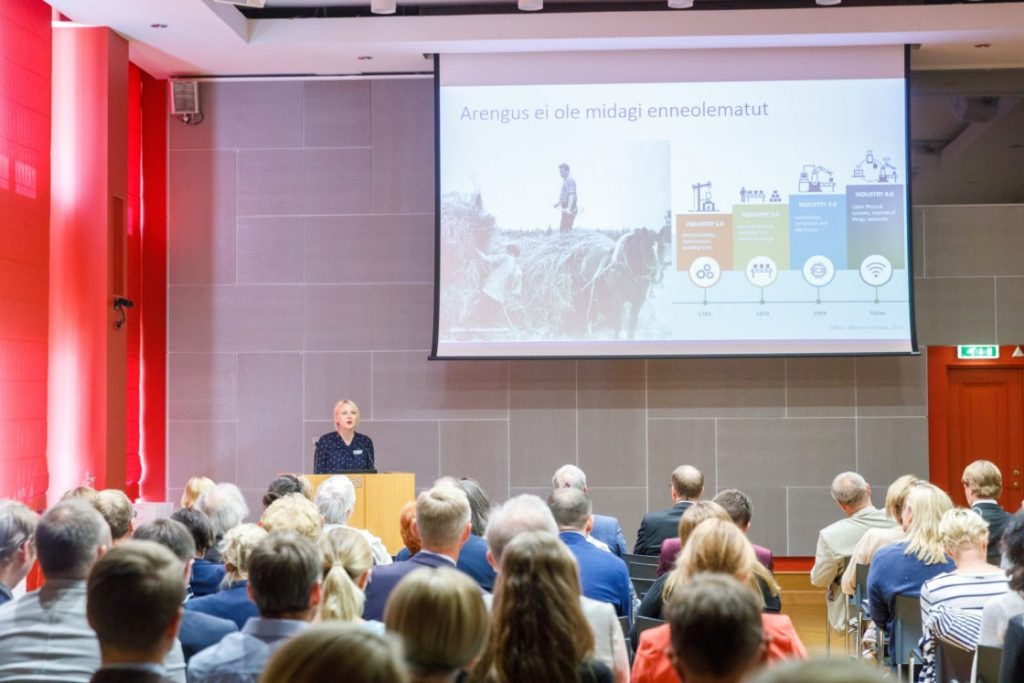Not the size of population, but the level of employment will define Estonia’s future success
The study commissioned by the Foresight Centre shows that during the next couple of decades, the working age population will decrease, but as people are participating in the labour market more actively, the percentage of working people in comparison to that of dependants will remain the same or even grow.

In the study, the researchers of the University of Tartu and Tallinn University reached the conclusion that during the next two decades, it will be possible to avoid the worsening of the employed and dependants ratio. It means that the absolute numbers of population and working age people are not of key importance. “Decrease of population is not a disaster for the labour market if we can create preconditions that enable the working age people to stay on the labour market, and keep the balance between the employed and the dependants. Improving of the education of the population, increase of pension age and greater integration are the key factors of greater employment,” expert of the Foresight Centre Johanna Vallistu pointed out.
These factors have an impact also at present. For example, since 2000, the number of the employed has increased by 72,000, although the number of working age people has decreased by 52,000 during the same period. “There are considerably more people among the generations that have reached working are recently than among the generations that are leaving working age. The increase of employment rate caused by greater integration is mainly connected with the better Estonian language skills of the younger generation of non-Estonians, which improves their opportunities on the labour market,” Vallistu explained. She emphasised that more attention should be paid to reducing dropping out from schools and improving the availability of higher and vocational education.
In Estonia, the retirement age has been rising since the middle of the 1990s, and this has had a positive impact on the employment of older people. This positive impact will probably continue, because it is planned to link the retirement age to average life expectancy, and the spread of flexible forms of work also contributes to the participation of older people on the labour market.
Moderate immigration will improve the ratio of employees and dependants in the nearest future, if it is presumed that the immigrants will find work in Estonia. According to the study, it will not have a positive impact in long-term perspective, or in the second half of the 21st century, because the birth rate of next generations of immigrants is generally lower than among the native population.
The researchers see three possibilities for stopping the decrease of the number of the employed in a more distant future than the coming decades: birth rate that approaches the restoration level together with balanced migration flows, continuing prevalence of immigration together with moderate increase of birth rate, or a combination of these two. In a longer future perspective, it is also possible, with the support of the increase of the level of education of the population, raising of retirement age and integration, to reach the situation where the decline of the percentage of the employed at the end of the 21st century in case of any demographic scenario will remain within the limits of 1–2%, regardless of the deepening ageing of the population. “The preconditions for longer working life are preserving of people’s health, lifelong learning and training. Naturally, the child and family friendliness of the society are also important,” Vallistu commented.
The study points out that the preconditions for increasing the employment rate are good in Estonia, because the social protection expenses in Estonia are modest in comparison to other countries – in Estonia, they form 16% of GDP, in the European Union member states 28% on the average.
It is the first time the change of employment rates has been approached in the context of long-term labour market forecast in Estonia, and it enables to show the changes in the ratio of the employed and the dependants more specifically than it has been done until now.
The employment study commissioned within the framework of the study on the future of the labour market of the Foresight Centre was conducted by Prof. Raul Eamets, Prof. Allan Puur, Magnus Piirits, Dr. Luule Sakkeus and Dr. Martin Klesment. The researchers analysed the possible long-term developments of employment in the case of various population scenarios. The population prediction used as the basis for the study was taken from the Estonian Human Development Report 2016/2017 “Estonia in the Age of Migration”, which analysed the changes in the number of population in Estonia under different migration and birth rates.
Latest news
-
27.06 2025Current low birth rate will lead to up to 1.3 billion euros less tax revenue in the future
In its new short report “The impact of population ageing and low birth rate on long-term state revenue and expenditure”, the Foresight Centre notes that the lower than projected birth rate will reduce government spending on family policy and education, but in the long term, it will mean up to 1.3 billion euros less in tax revenue.

 An independent think tank at the Riigikogu
An independent think tank at the Riigikogu